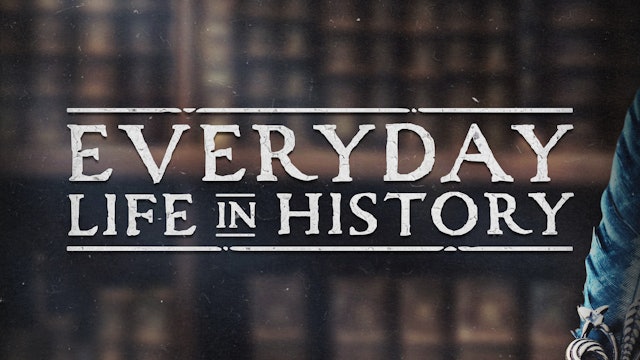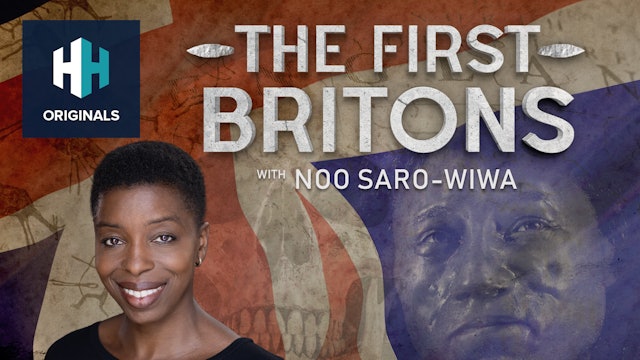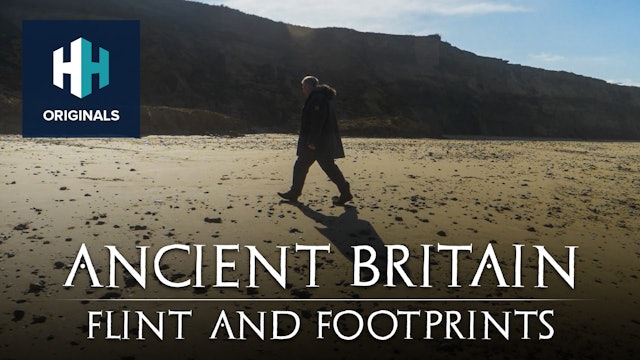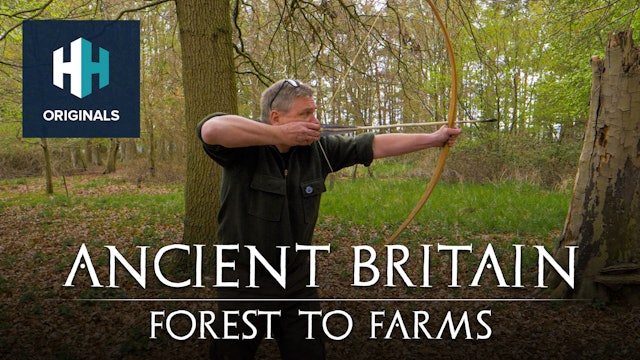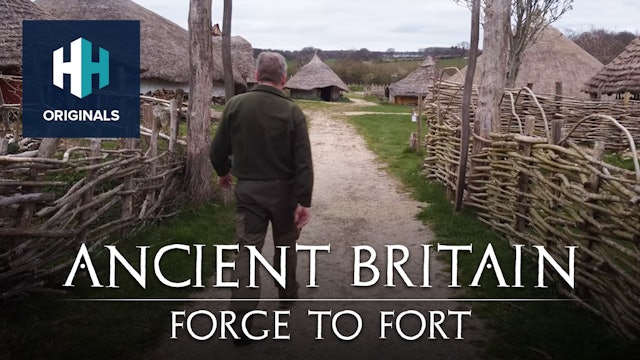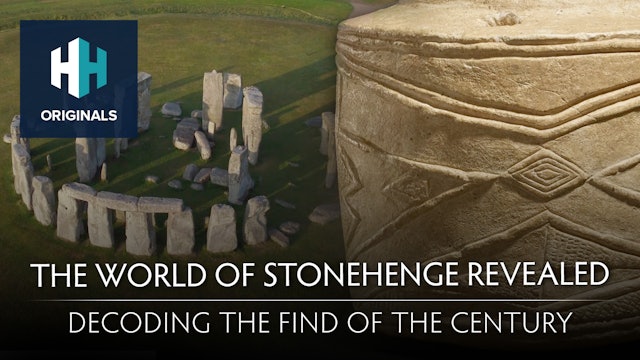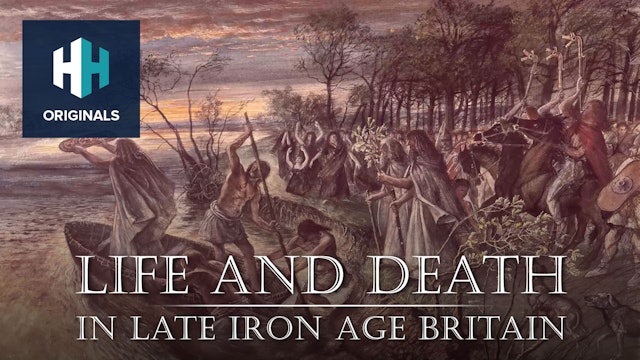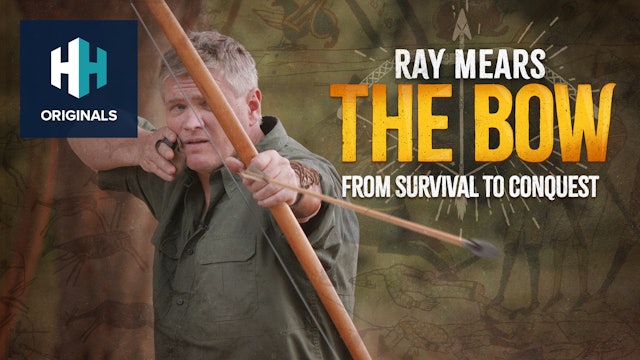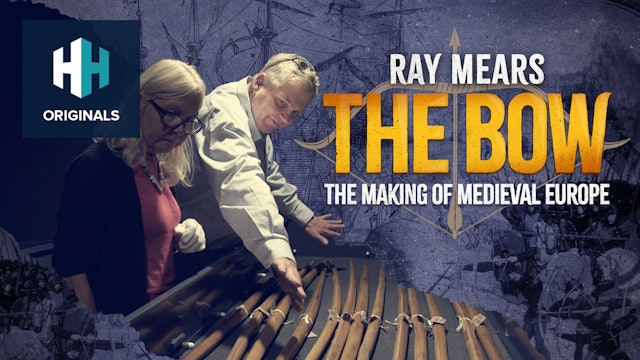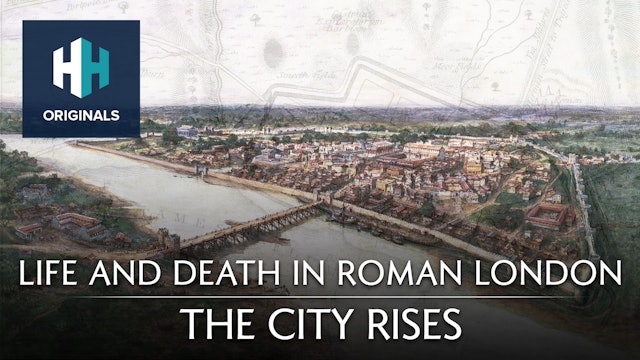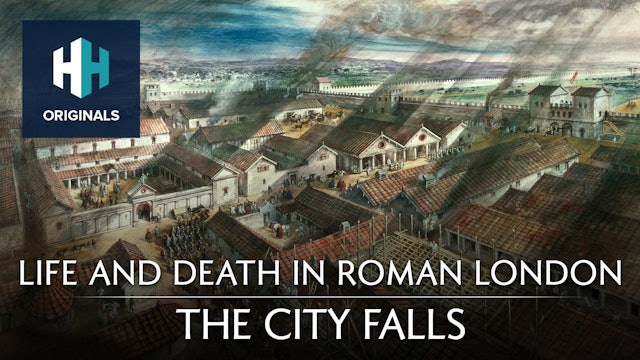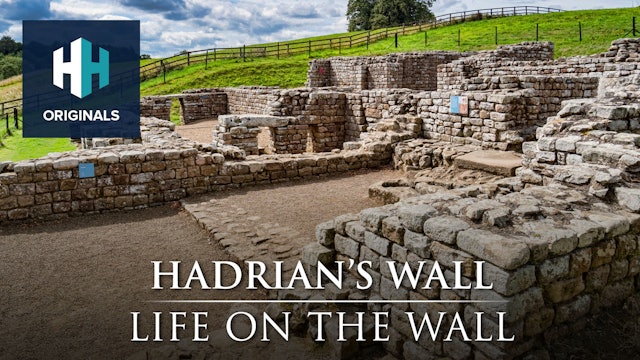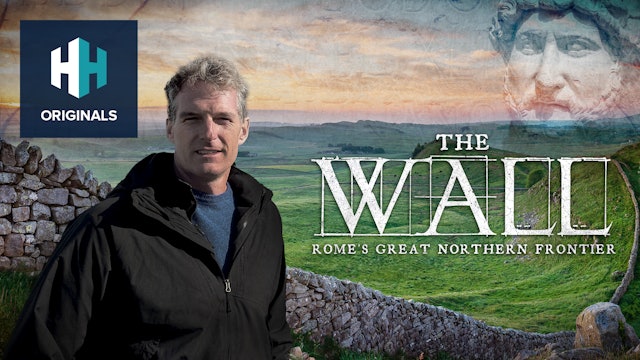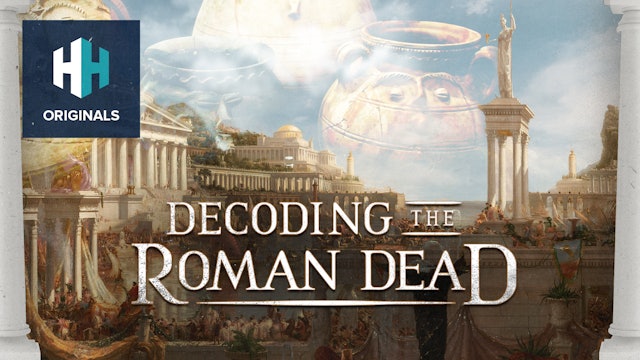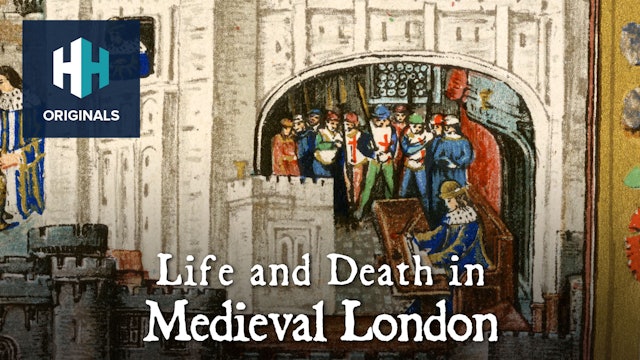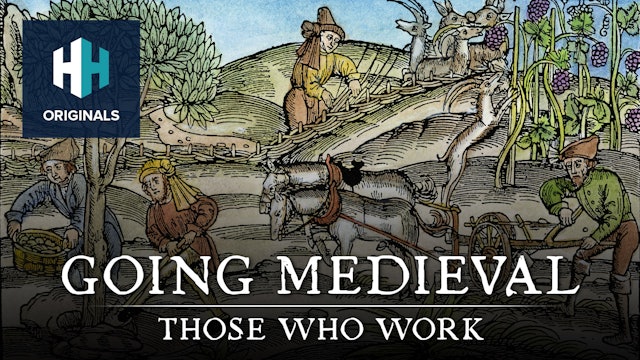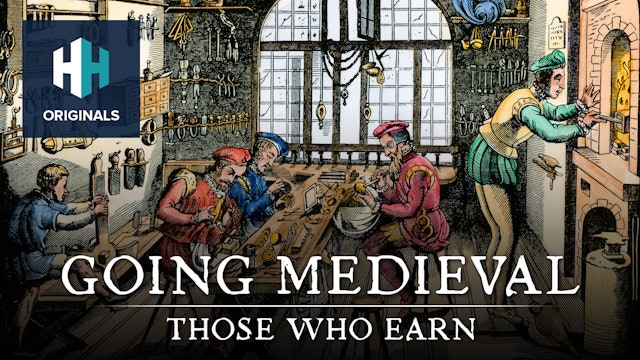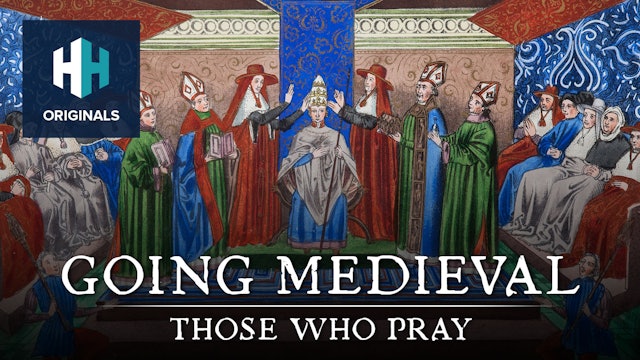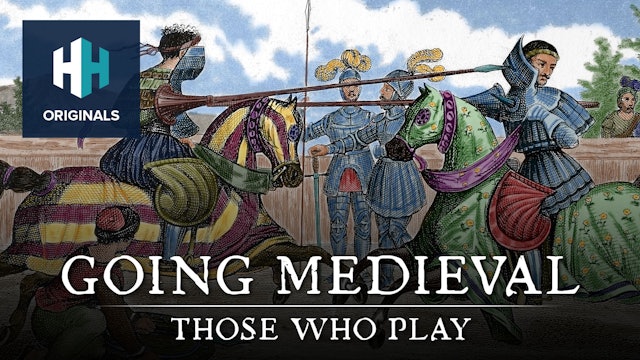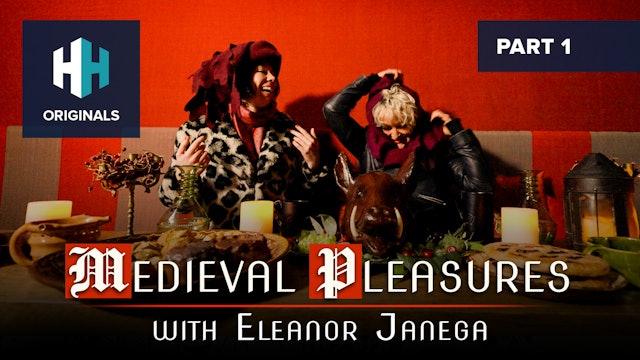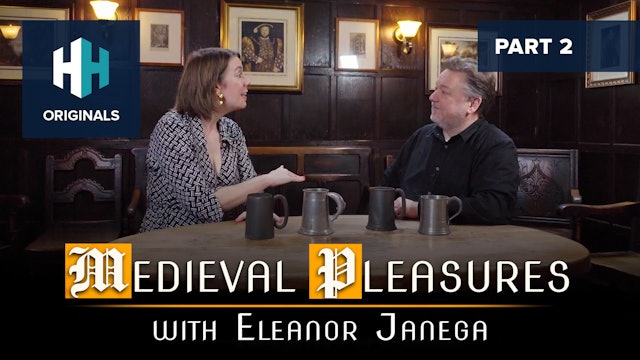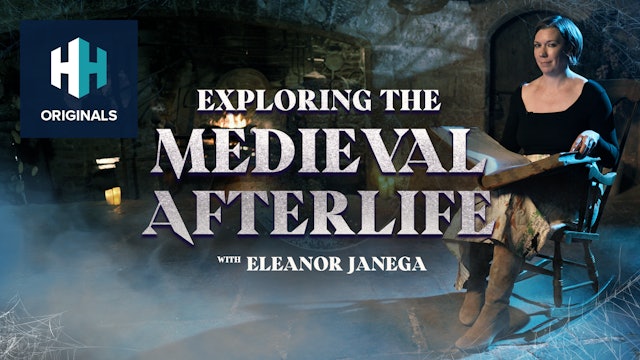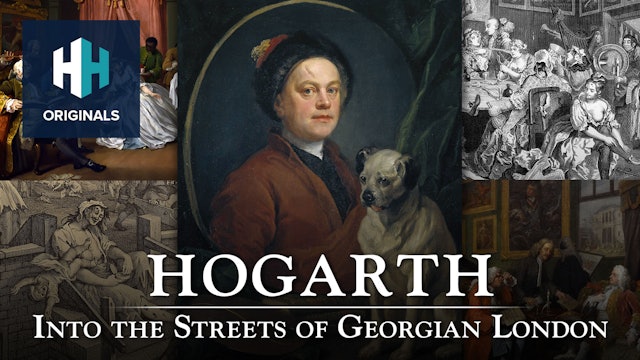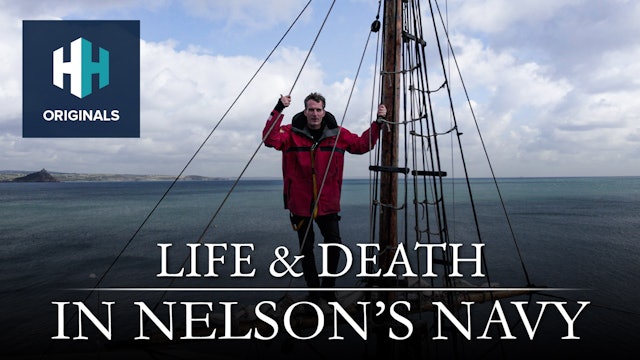-
The First Britons
If the words British history conjure up images of Elizabeth I, Shakespeare, Boudica, Mary Seacole, The Beatles and the Blitz, you’re squinting at a small spec of the history of humanity of these Isles. Even if you go back to the Roman invasion of Britain in 43 AD, or even further to the Iron Age ...
-
Ancient Britain with Ray Mears: Flint and Footprints
Britain is an island where history is well and truly part of the landscape and an island where human feet have walked for a million years. We are constantly making groundbreaking archaeological discoveries that are helping us to better understand the way in which our distant ancestors lived.
Joi...
-
Ancient Britain with Ray Mears: Forest to Farms
12,000 years ago, Britain entered a new chapter in its long history. By this point, hunting tools had evolved, from hefty spears to the slick and stealthy bow and arrow. This revolution in technology would change the way humans hunted forever.
In a period in which Britain was also thawing and e...
-
Ancient Britain with Ray Mears: Forge to Fort
Around 800 BC, Britain entered the Iron Age. This era saw the gradual introduction of iron working technology, although the general adoption of iron artefacts did not become widespread until after 500-400 BC.
As the Iron Age progressed through the first millennium BC, strong regional groupings e...
-
The World of Stonehenge Revealed: Decoding the Find of the Century
Described as the "most important piece of prehistoric art to be found in Britain in the last 100 years", an elaborately decorated 5000 year-old chalk cylinder, discovered buried with 3 child skeletons in Yorkshire and as old as the first phase of Stonehenge, is going on display at the British Mus...
-
Life and Death in Late Iron Age Britain
Roman connections with Britain stretch back to (at least) the mid 1st century BC, but what has archaeology revealed about the Late Iron Age British societies they interacted with? Do we have any concrete evidence for the druids? Was human sacrifice a thing? Sit back and enjoy as experts provide a...
-
Ray Mears, The Bow: From Survival to Conquest
The oldest known evidence of the use of the bow comes from South Africa, where microliths, believed to be arrowheads dating from around 70,000 years ago, have been found.
Evidence of humans' use of the bow can be found all over the world, from cave art in Algeria that shows a man shooting a slig...
-
Ray Mears, The Bow: The Making of Medieval Europe
In part one we followed Ray as he uncovered how the bow developed from a tool used by our ancient ancestors to hunt to its early use as a deadly weapon on the battlefield.
In this episode we'll join Ray as he continues his journey into the evolution of the bow and birth of the most deadly weapo...
-
Life and Death in Roman London: The City Rises
Today it is one of the greatest cities on Earth. But London, originally, was a Roman city. Join historian and archaeologist Dr Simon Elliott in this two part series. With the help of leading experts Dr Sophie Jackson and Dr Rebecca Redfern, Simon tells the story of Roman London. From Boudica’s in...
-
Life and Death in Roman London: The City Falls
Today it is one of the greatest cities on Earth. But London, originally, was a Roman city. Join Dr Simon Elliott in this two part series where, with the help of leading experts Dr Sophie Jackson and Dr Rebecca Redfern, he tells the story of Roman London. From Boudica’s infamous destruction to how...
-
Life on the Wall
In this episode, Tristan Hughes visits two key sites along Hadrian’s Wall that can tell us more about everyday life on this far flung frontier, with a particular focus on hygiene and worship. First on the list is Chesters Roman Fort. Described as one of the most complete cavalry forts that surviv...
-
The Wall: Rome's Great Northern Frontier
Hadrian’s Wall is celebrating its 1900th birthday… the perfect time for History Hit to investigate this potent embodiment of Roman dominance.
Dan Snow explores the physical remains of Hadrian’s vast project of 122AD - over 80 Roman miles of wall, turrets and forts, stretching from coast to coast...
-
Decoding the Roman Dead
Colchester Museums have been working with archaeologists and specialists to ‘decode’ the hidden stories of 40 of Colchester’s earliest inhabitants.
Through new scientific research techniques, they have reconstructed the identity and lives of these people: where they came from in the empire, wha...
-
Life and Death in Medieval London
Medieval historian Dr Eleanor Janega takes us on a whistle-stop tour across London, visiting some key historical sites and shining a light on the various communities of medieval London.
-
Going Medieval: Those Who Work
In the Medieval period, peasants made up roughly 80% of the European population (70% were serfs). In the first episode of Going Medieval, Dr Eleanor Janega visits Denny Abbey, a former Benedictine monastery in Cambridge to explore the lives of those who devoted their lives to working the land.
-
Going Medieval: Those Who Earn
Whilst the majority of people who worked in the Medieval Period were peasants, a significant community of merchants and tradesmen existed, the majority of whom belonged to one of the most powerful and influential groups in medieval Europe - the Guilds. Guilds were associations of artisans and mer...
-
Going Medieval: Those Who Pray
One of the most unifying elements of the Medieval Period was the Roman Catholic Church. All classes and ranks of people, whether that be nobles, peasants or tradesmen, were profoundly affected by the rulings of the church. A hierachy existed within the clergy. Following the pope, in order of rank...
-
Going Medieval: Those Who Play
In the medieval feudal system, the nobility were generally those who held a fief, often land or office under vassalage in exchange for military allegiance to their sovereign. Living alongside serfs, it was their duty to ensure that the peasants, craftsmen and clergymen were defended so that they ...
-
Medieval Pleasures, Part 1: Sex
Get ready to indulge in some Medieval Pleasures. In this three-part series, historian Dr Eleanor Janega (@Going Medieval) takes us on a journey into the sumptuous world of Sex, Booze and Sport throughout the Medieval period.
Warning: contains very strong language and sexual content.
Part I: Sex...
-
Medieval Pleasures, Part 2: Booze
Episode Two: Booze
Alcohol was an essential part of medieval life. In one of London’s oldest pubs, Ye Old Mitre, Eleanor discovers the origins of the humble pub with beer expert Pete Brown, and dispels the many myths surrounding the drinking habits of the people who drank here centuries ago
...
-
Medieval Pleasures, Part 3: Sport
Eleanor ventures into the Royal Armouries tiltyard, where seasoned jouster Andy Deane, and his opponent Andrew Balmforth, face off in an adrenaline fuelled jousting tournament - and you're invited!
We discover the harsh realities of this sport that's synonymous with the Middle Ages, and learn ab...
-
Exploring the Medieval Afterlife with Eleanor Janega
Ghosts, ghouls and things that go bump in the night! Dr Eleanor Janega delves into the medieval phantasmic to find out what their restless dead can tell us about the worries of the living. Because if we want to understand what makes another society tick, it helps to take a look at what makes them...
-
Hogarth: Into the Streets of Georgian London
Born in London at the turn of the 18th Century, William Hogarth became one of the most iconic English painters, printmakers, pictorial satirists, social critics, and editorial cartoonists of his generation.
Often dubbed the mirror of 18th Century London, Hogarth's most notable works include, A ...
-
Life and Death in Nelson's Navy
200 years ago, Britain's Royal Navy was the most technologically advanced and supremely efficient force in the history of naval warfare.
But what was it like to live and work on board these ships? What did the men eat? How did the ships sail? What were the weapons they used?
In this documentar...

